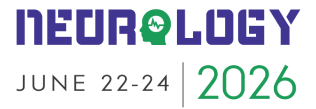Title : Speech and communication skills and their impact on cortisol levels: Linking human interaction with the physiology of stress
Abstract:
Background: Communication is a fundamental component of human interaction, yet public speaking and socially evaluative communication tasks are among the most potent triggers of stress. In such situations, activation of the hypothalamic–pituitary–adrenal (HPA) axis increases cortisol secretion, the primary biomarker of physiological stress. This review aims to synthesize research published between 2000 and 2024 examining the relationship between speech, communication skills, and cortisol levels in humans.
Methods: A narrative review was conducted using studies assessing cortisol responses during public speaking, oral examinations, and structured communication training programs.
Results: Evidence consistently shows that public speaking and oral performance tasks elicit significant elevations in cortisol across most studies, identifying speech as one of the strongest biological elicitors of stress. Conversely, communication-skills training—particularly when delivered through structured and repeated practice—reduces physiological stress responses and modifies cortisol secretion patterns. Findings indicate that effective speech training enhances self-efficacy and emotional regulation, thereby attenuating the HPA-axis response to social stress. However, several studies report a transient rise in cortisol during the early stages of training, likely reflecting increased cognitive load and heightened self-monitoring as individuals adapt to new skills.
Conclusion: Overall, current evidence suggests that communication skills exert not only behavioral but also measurable physiological effects on the body’s stress response. Incorporating communication-skills education into academic, therapeutic, and psychiatric settings may improve performance, reduce stress, and promote mental well-being. Further research is needed to clarify the neuroendocrine mechanisms underlying these adaptations and to determine optimal training formats that most effectively regulate cortisol responses.




